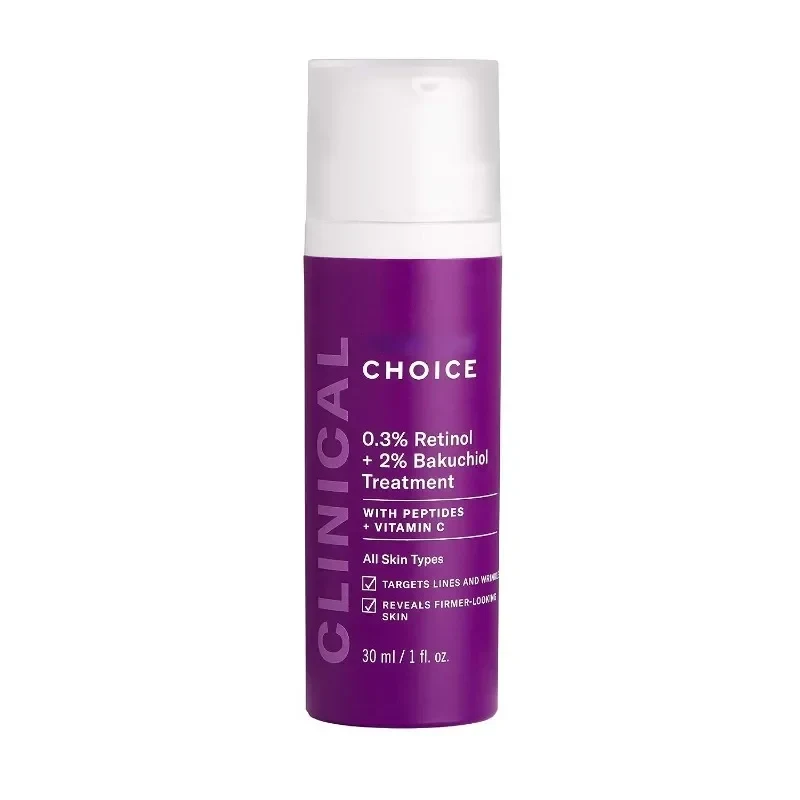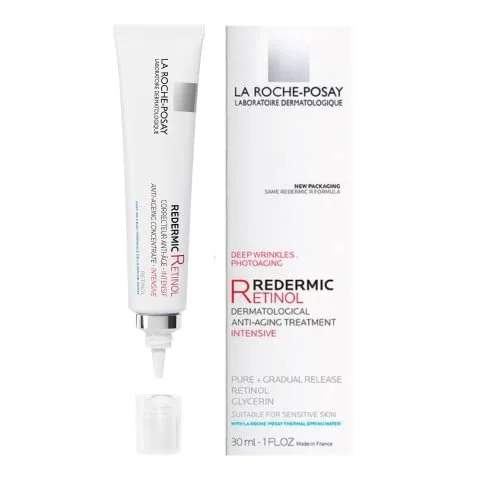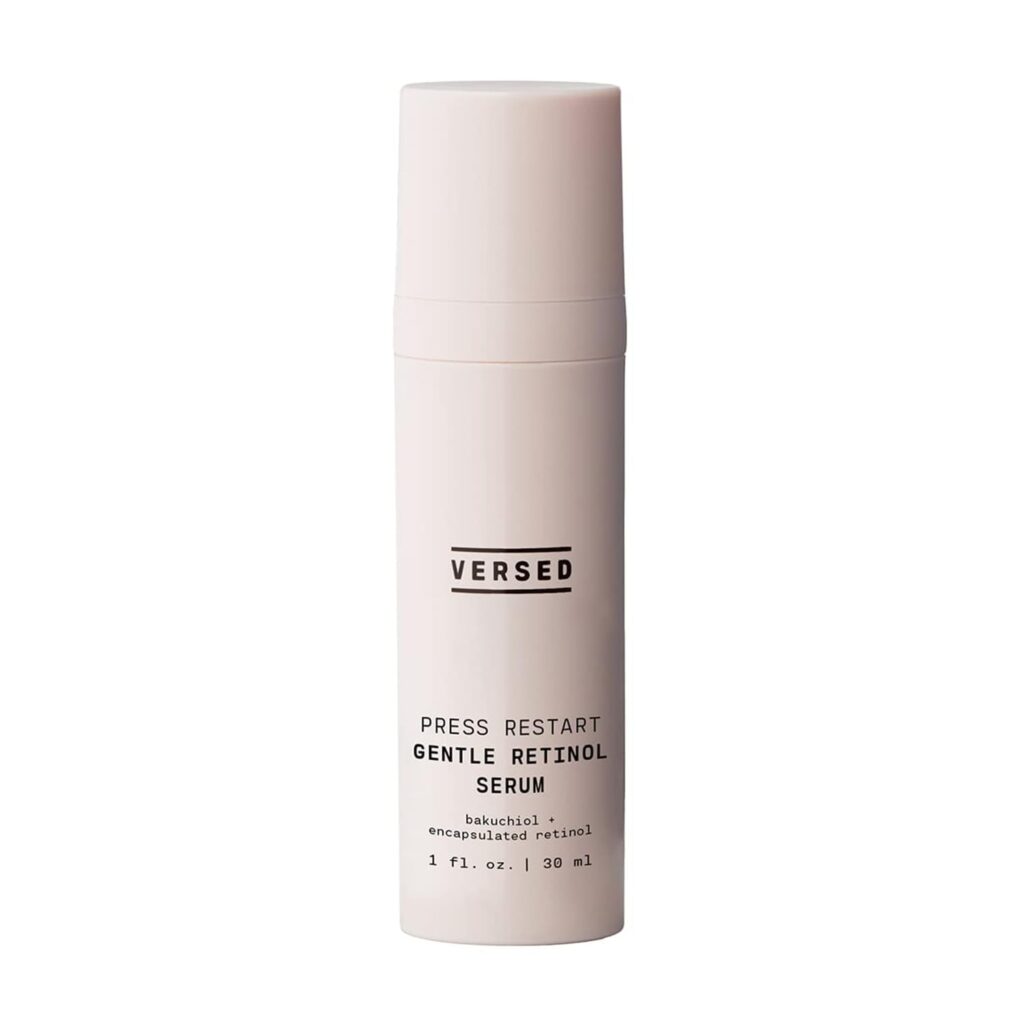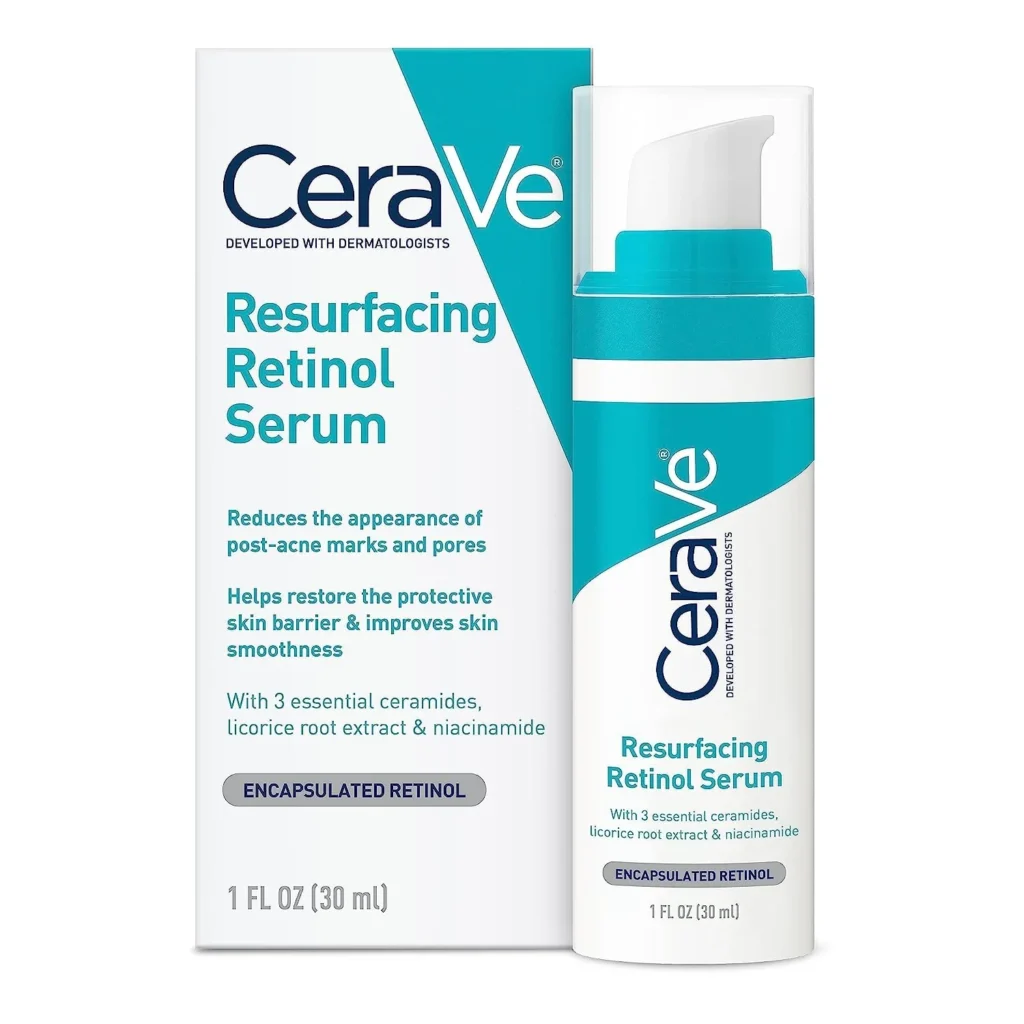Because radiant skin starts with the right foundation — not just hype.
🌟 Introduction: So You’ve Heard of Retinol. Now What?
If you’ve ever Googled “how to fix dull skin,” “treat acne,” or “anti-aging skincare that actually works,” chances are, retinol popped up. It’s one of the most studied and recommended skincare ingredients out there — but for beginners, it can also be confusing, intimidating, and downright overwhelming.
The truth is: retinol isn’t one-size-fits-all. Used correctly, it can smooth texture, fade dark spots, treat breakouts, and even reduce fine lines — but used incorrectly, it can also cause irritation, redness, or peeling. The key is starting slow, choosing the right product, and building a routine that your skin can actually handle.
In this guide, you’ll learn:
🔍 What retinol actually does and why it’s worth the hype
🧴 How to choose the right strength for beginners
🕰️ How often to use it (without wrecking your barrier)
🌙 What ingredients to pair or avoid when starting out
✅ 9 beginner-friendly retinol products that work — gently
Let’s take the guesswork out of retinol and start your journey to clearer, smoother, glowier skin — the smart way.
📖 Retinol for Beginners: What You Need to Know
🔍 What Does Retinol Actually Do?
Retinol (a derivative of Vitamin A) is often described as the gold standard in skincare — and with good reason. When applied topically, retinol encourages your skin to speed up cell turnover, stimulate collagen, and shed dead skin cells more efficiently. Over time, this leads to:
- Smoother skin texture
- Faded acne scars and dark spots
- Reduced breakouts
- Diminished appearance of fine lines
- A more even, radiant complexion
Unlike exfoliating acids that work on the surface, retinol works below the skin to trigger repair and renewal. But that power comes with a caveat: if used too quickly or too aggressively, it can cause dryness, redness, peeling, and flaking — especially for beginners.
🧴 How to Choose the Right Retinol Strength for Beginners
This is where most people go wrong. When starting out, more isn’t better — and high percentages don’t mean faster results. The key is to start low and slow, allowing your skin to gradually build tolerance.
Here’s a quick guide:
| Strength | Best For | Notes |
| 0.1% – 0.3% | True beginners, sensitive skin | Gentle enough for most, especially when paired with hydrators |
| 0.5% | Intermediate users | Effective but may cause mild peeling initially |
| 1% | Advanced users | High strength — not for beginners unless you’ve built tolerance over time |
👉 Pro Tip: If your skin is dry, sensitive, or acne-prone, begin with 0.2% – 0.3% retinol paired with a nourishing buffer like squalane or ceramides.
🕰️ How Often to Use Retinol (Without Wrecking Your Barrier)
Starting retinol is like training for a marathon — gradual, consistent progress wins. The golden rule is low frequency, then build up. Here’s a beginner-friendly plan:
- Week 1–2: Use once a week at night
- Week 3–4: Increase to twice a week
- Week 5–6: Use every other night if tolerated
- Month 2+: Use up to 3x per week or as recommended by your derm
👉 Always apply retinol at night, and never forget broad-spectrum SPF during the day. Retinol increases photosensitivity — which means sun damage risk goes up without protection.
🌙 What Ingredients to Pair or Avoid When Starting Retinol
✅ What to Pair With Retinol (Soothing + Supportive):
- Hyaluronic Acid – Deeply hydrates and plumps to counteract dryness
- Ceramides – Strengthen the skin barrier and reduce flakiness
- Niacinamide – Calms inflammation and supports elasticity
- Peptides – Promote skin repair and resilience
- Squalane or Jojoba Oil – Helps buffer irritation and lock in moisture
🚫 What to Avoid (for Now):
- AHAs/BHAs (glycolic, lactic, salicylic acid) – May cause over-exfoliation
- Benzoyl Peroxide – Too harsh when used with retinol, especially early on
- Vitamin C (L-ascorbic acid) – Can be sensitizing; best used in AM, not with PM retinol
- Essential Oils or Fragrance-heavy products – Often irritating when barrier is adapting
👉 Layering Tip: Apply a gentle moisturizer before or after retinol if your skin is dry or new to actives — this is called the “sandwich method” and helps buffer irritation.
✅ What Makes a Retinol Beginner-Friendly?
Here’s what to look for when choosing your first retinol product:
- Low concentration (0.1–0.3%)
- Moisturizing base (cream, oil, or squalane)
- Fragrance-free + non-irritating formula
- Clear instructions and usage guidance
- Dermatologist-tested or sensitive-skin certified
🧴 1. The Ordinary Retinol 0.2% in Squalane

Why It’s Worth It:
This is the beginner’s retinol. Affordable, no-frills, and thoughtfully formulated, The Ordinary’s 0.2% Retinol in Squalane gives you a gentle entry point into retinoids — without risking full-blown irritation. The low strength allows your skin to slowly acclimate, while the squalane base keeps things nourished and buffered.
If you’ve been scared to try retinol because of horror stories, this is your safe, skin-friendly starting line.
✨ Key Ingredients (Detailed + Keyword-Rich)
- Retinol (0.2%) – A gentle concentration perfect for first-time users. Retinol helps stimulate collagen production, accelerate cell turnover, and fade hyperpigmentation — all without overwhelming sensitive or reactive skin when used at this low percentage.
- Squalane (100% plant-derived) – This lightweight, non-comedogenic oil mimics your skin’s natural lipids, acting as a cushion to reduce irritation. It deeply hydrates while delivering retinol more evenly, making it ideal for dry or beginner skin.
- Jojoba Oil – Soothing and barrier-repairing, jojoba helps balance sebum production and calms any dry patches that may occur during your retinol initiation phase.
- Tomato Fruit Extract – A source of lycopene and other antioxidants, this extract provides free-radical protection and supports your skin’s healing process, especially when retinol is first introduced.
📋 Pros & Cons
| Pros | Cons |
| Extremely beginner-friendly 0.2% strength | May feel oily for acne-prone or oily skin types |
| Squalane base buffers irritation and dryness | Dropper bottle can oxidize if not stored properly |
| No fragrance, essential oils, or fillers | Must apply SPF during the day while using |
| Excellent price point for a starter retinol |
🔬 Backed By
- Over 30,000 5-star reviews across Amazon, Sephora, and Reddit’s SkincareAddiction
- Frequently recommended by dermatologists for first-time retinol users
- Highlighted in Into The Gloss, Allure, and The Cut as the best “retinol training wheels”
- Trusted by beauty professionals as a prep product before moving to stronger retinoids
🧴 2. Paula’s Choice 0.3% Retinol + 2% Bakuchiol Treatment

Why It’s Worth It:
This hybrid serum combines 0.3% pure retinol with 2% bakuchiol — a natural plant-based alternative that mimics retinol’s benefits without added irritation. The result? A gentle but effective formula that delivers visible improvement in texture, tone, and fine lines, without shocking your skin.
It’s perfect for beginners who’ve tried low-percentage retinol (like 0.2%) and are ready for a small bump in strength — without jumping into the deep end. Think of this as your next logical step: science-backed, barrier-safe, and results-focused.
✨ Key Ingredients (Detailed + Keyword-Rich)
- Retinol (0.3%) – This intermediate strength is still beginner-friendly but offers more noticeable results over time. It promotes collagen synthesis, fades dark spots, and improves skin firmness with lower risk of dryness or flaking — especially when paired with bakuchiol.
- Bakuchiol (2%) – A plant-derived retinol alternative that enhances skin clarity, reduces fine lines, and calms inflammation. It’s known to provide retinol-like benefits without the irritation, making this combo ideal for sensitive or rosacea-prone users.
- Peptides – These amino-acid chains help strengthen the skin barrier, improve elasticity, and support your skin’s natural repair processes — making the formula more tolerable for those new to retinoids.
- Vitamin C (Tetrahexyldecyl Ascorbate) – A stable, oil-soluble form of vitamin C that brightens dullness and enhances retinol’s collagen-boosting effects — without the irritation that L-ascorbic acid might cause.
- Licorice Root Extract – Naturally calming and anti-inflammatory, licorice root helps reduce redness and post-acne pigmentation, making this product a great fit for anyone dealing with both sensitivity and discoloration.
📋 Pros & Cons
| Pros | Cons |
| Combines retinol + bakuchiol for gentler results | Slightly higher price point |
| Includes peptides and antioxidants to support skin barrier | May cause mild purging in acne-prone users |
| Brightens, smooths, and improves fine lines | Not suitable for ultra-sensitive users starting from scratch |
| Ideal second step after The Ordinary 0.2% |
🔬 Backed By
- Formulated by Paula’s Choice, a brand known for science-backed skincare with sensitive-skin safe options
- Recommended by dermatologists for those easing into higher-strength retinoids
- Featured in Byrdie, Marie Claire, and SkincareEdit as a top pick for retinol beginners ready to level up
- 4.8-star average across over 10,000 reviews praising its glow-boosting effect without the burn
🧴 3. La Roche-Posay Redermic R Retinol Cream

Why It’s Worth It:
If you’re nervous about irritation or have tried retinol before and given up, Redermic R could be your redemption story. Formulated by one of the most trusted derm brands in the world, this retinol cream uses a slow-release delivery system to give you results — without the redness, dryness, or flaking that can scare beginners off.
The addition of soothing thermal spring water and neurosensine makes this especially ideal for sensitive, redness-prone, or rosacea-leaning skin types.
✨ Key Ingredients (Detailed + Keyword-Rich)
- Pure Retinol (0.3%) – A beginner-safe strength that helps minimize fine lines, fade sun spots, and smooth skin texture over time. It’s released slowly to minimize irritation while still delivering consistent anti-aging and anti-acne benefits.
- Retinyl Linoleate – A milder, stabilized retinoid that works in tandem with pure retinol. It enhances skin turnover and supports barrier repair, helping sensitive skin adapt more easily to retinol usage.
- La Roche-Posay Thermal Spring Water – Naturally rich in selenium and minerals, this French spring water is clinically proven to reduce inflammation, soothe reactivity, and support a healthy skin microbiome. It’s a calming base that sets this formula apart for sensitive skin.
- Glycerin – A powerful humectant that draws water into the skin and helps reduce tightness or dryness that can occur during the retinol adjustment phase.
- Neurosensine – A dipeptide known for its calming, anti-inflammatory properties. It reduces skin discomfort and sensitivity — making this product one of the most well-tolerated retinols for reactive skin types.
📋 Pros & Cons
| Pros | Cons |
| Time-release retinol minimizes irritation | Slight fragrance (though tolerable for most sensitive skin) |
| Includes soothing spring water + calming peptides | Pricier than typical drugstore options |
| Ideal for rosacea-prone or redness-prone skin | Not ideal for those seeking fast, dramatic results |
| Dermatologist-recommended and clinically tested |
🔬 Backed By
- Developed by dermatologists and allergy-tested for even the most sensitive skin
- Recommended by skin professionals for retinol beginners with rosacea or redness
- Featured in Dermstore’s Top Retinol Picks, Harper’s Bazaar, and Allure’s Best Skincare for Sensitive Skin
- La Roche-Posay’s retinol line is used in clinics worldwide for patients easing into retinoid treatments
🧴 4. Versed Press Restart Gentle Retinol Serum

Why It’s Worth It:
Retinol can be intimidating — but this serum is anything but. Versed Press Restart is a plant-powered, fragrance-free formula that blends encapsulated retinol with bakuchiol, giving you the benefits of a retinoid without the fear of irritation.
It’s ideal for sensitive, acne-prone, or dry skin types, and one of the best picks for anyone who’s been told “retinol’s too harsh for you.” Bonus: it’s also vegan, cruelty-free, and budget-friendly without cutting corners on quality.
✨ Key Ingredients (Detailed + Keyword-Rich)
- Encapsulated Retinol – This delivery method allows retinol to penetrate gradually, reducing risk of redness, flaking, or purging. You still get the benefits — firmer texture, clearer pores, more even tone — just at a slower, gentler pace ideal for beginners.
- Bakuchiol – A botanical retinol alternative that helps smooth fine lines, fade discoloration, and firm the skin — all without photosensitivity or irritation. It works synergistically with retinol to boost results, making it a great pairing for those easing into retinoids.
- Chlorophyll – More than just a green tint. Chlorophyll is rich in antioxidants and known for its anti-inflammatory benefits, making it ideal for calming redness and reactivity as your skin adjusts to actives.
- Aloe Vera Juice – A staple soothing agent that hydrates and protects. It’s especially helpful for retinol beginners who may experience tightness or sensitivity in the early weeks.
- Natural Emollients (Squalane & Sunflower Seed Oil) – These help buffer the formula, reduce dryness, and keep the skin barrier supported — without clogging pores or triggering breakouts.
📋 Pros & Cons
| Pros | Cons |
| Extremely gentle — ideal for sensitive, reactive skin | Very mild — not for those seeking fast results |
| Includes bakuchiol to enhance retinol benefits | Serum texture may feel too light for dry skin unless layered |
| Fragrance-free, vegan, and cruelty-free | Slight green tint from chlorophyll (cosmetic only) |
| Affordable for a clean beauty product |
🔬 Backed By
- Featured in The Zoe Report, MindBodyGreen, and Who What Wear as a top plant-based retinol alternative
- Loved by beginner users with rosacea, acne, or easily irritated skin
- Over 6,000 glowing reviews across Target, Amazon, and Dermstore
- Frequently recommended in clean beauty circles as a gentle entry into retinoids
🧴 5. CeraVe Resurfacing Retinol Serum

Why It’s Worth It:
If you’re just starting with retinol and your skin concerns include post-acne marks, texture, or large pores, this is a standout choice. CeraVe’s Resurfacing Retinol Serum is one of the most accessible, dermatologist-developed retinols for beginners — and it’s specifically made for sensitive and acne-prone skin.
It features encapsulated retinol for slow, controlled delivery, and combines it with niacinamide, ceramides, and licorice root extract — a dream team for soothing irritation while visibly improving skin tone and texture.
✨ Key Ingredients (Detailed + Keyword-Rich)
- Encapsulated Retinol – Designed to penetrate gradually and reduce irritation, this form of retinol helps increase cell turnover, fade acne marks, and unclog pores — all while being gentle enough for daily use in most beginners.
- Niacinamide (4%) – A multi-tasking B3 vitamin that reduces redness, balances oil production, and helps fade hyperpigmentation. It also plays a key role in reinforcing the skin barrier — essential when introducing actives like retinol.
- Ceramides (1, 3, and 6-II) – Skin-identical lipids that replenish the barrier and lock in hydration. These help minimize any peeling, flaking, or tightness that can happen in the early retinol phase.
- Licorice Root Extract – A natural brightener and anti-inflammatory that helps even out skin tone and calm post-inflammatory hyperpigmentation, especially useful if you’re using retinol to tackle post-acne discoloration.
- MVE Delivery Technology – A patented system that releases ingredients over time, ensuring long-lasting hydration and slow retinol delivery — great for reducing the chance of irritation in sensitive or reactive skin.
📋 Pros & Cons
| Pros | Cons |
| Gentle enough for daily use on sensitive or acne-prone skin | Very lightweight — some may need to layer a heavier moisturizer |
| Includes niacinamide + ceramides for barrier repair | Results take time — not a quick fix |
| Fragrance-free, non-comedogenic, and allergy-tested | May not suit ultra-dry or mature skin needing richer formulas |
| Budget-friendly and available at most drugstores |
🔬 Backed By
- Developed with dermatologists and approved by the National Eczema Association
- Featured in Vogue, Allure, and SkincareRx as a top beginner-friendly retinol serum
- Over 25,000 5-star reviews from users with sensitive, acne-prone, or post-breakout skin
- Frequently recommended by derms for first-time retinol users with pigmentation concerns
📊 Comparison Table: Best Retinols for Beginners (2025)
| Product | Best For | Key Benefits | Strength | Fragrance-Free |
| The Ordinary 0.2% in Squalane | First-time users, dry or sensitive skin | Gentle, budget-friendly, barrier-cushioned | 0.2% | ✅ |
| Paula’s Choice 0.3% + Bakuchiol | Beginners with mild texture/pigment | Retinol + plant-powered bakuchiol + peptides | 0.3% | ✅ |
| La Roche-Posay Redermic R | Rosacea-prone or easily irritated skin | Time-release retinol with neurosensine + spring water | 0.3% + derivative | ❌ (light scent) |
| Versed Press Restart Serum | Clean beauty lovers & sensitive skin | Encapsulated retinol + bakuchiol + soothing botanicals | Mild | ✅ |
| CeraVe Resurfacing Serum | Acne marks, large pores, post-breakout skin | Retinol + niacinamide + ceramides for calm resurfacing | Encapsulated (0.3–0.5%) | ✅ |
🧠 Expert Quote
“Retinol doesn’t have to mean red, flaky skin. Start with the right strength, buffer your application, and build gradually — your skin will thank you. For beginners, pairing retinol with calming ingredients like niacinamide, bakuchiol, and ceramides makes all the difference.”
— Dr. Alina Mahmood, Board-Certified Dermatologist & Skin Barrier Specialist
❓ Retinol Beginner FAQs
Q1: When should I start using retinol?
If you’re in your early 20s and noticing texture, breakouts, or pigmentation, you can start with a low-strength retinol. Many derms recommend starting around 25 for anti-aging prevention — earlier for acne control.
Q2: How long before I see results?
You’ll start noticing smoother texture within 4–6 weeks, but true changes in pigmentation, fine lines, and breakouts take 8–12 weeks. Retinol is a marathon, not a sprint.
Q3: Can I use retinol every day as a beginner?
Not right away. Most people start with 1–2x per week and work up to every other night. Daily use should only come once your skin has built up tolerance (usually after 8+ weeks of consistent use).
Q4: Can I use retinol with my other skincare products?
Avoid pairing retinol with AHAs, BHAs, or strong Vitamin C at the same time. Instead, stick with hydrators like hyaluronic acid, ceramide-rich moisturizers, and niacinamide to support your barrier.
Q5: Is purging normal?
Yes — especially if you’re acne-prone. Retinol speeds up cell turnover, which can bring congestion to the surface. This usually subsides within a few weeks. If it continues longer, consult a derm.
🏁 Final Thoughts: You Don’t Have to Fear Retinol
Retinol is powerful — but when introduced gently, it can completely transform your skin. Whether you’re targeting acne, pigmentation, fine lines, or just looking for that long-term glow, there’s a beginner-safe retinol that can help you get there — without wrecking your barrier.
Start slow, stay consistent, and support your skin every step of the way. These five beginner-friendly picks are proof that retinol doesn’t have to hurt to work — it just has to be done right.
✨ Glow begins where fear ends. You’ve got this.

Leave a Reply